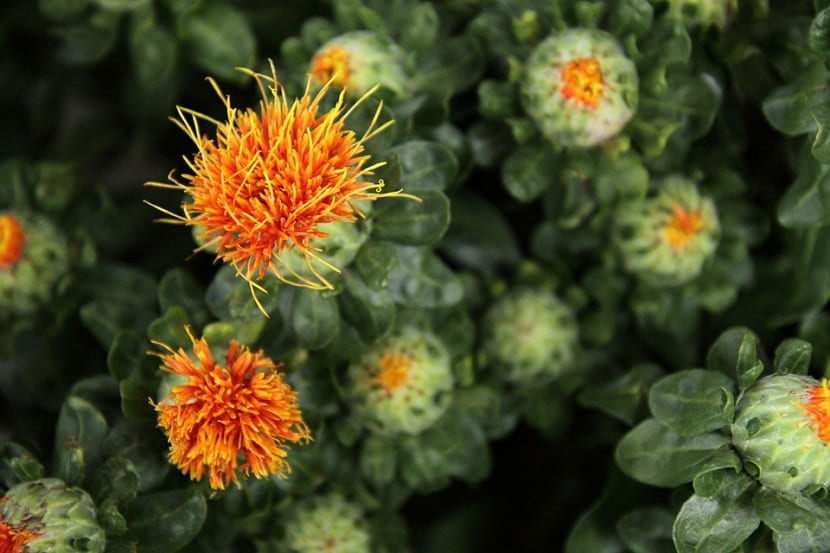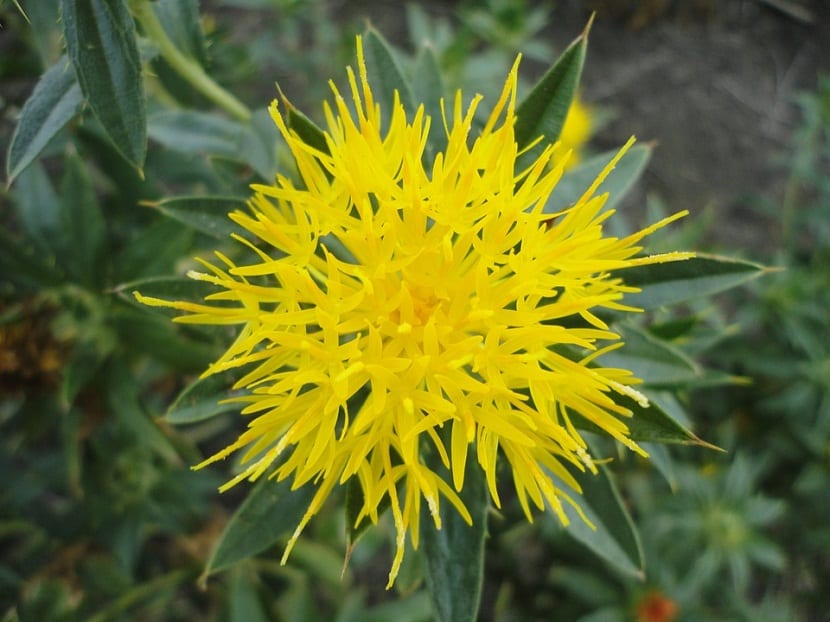
Safflower is a herbaceous plant, which was cultivated in ancient times for the coloring that its flowers produce. Today an edible oil is extracted from its seeds, this being a clearly oleaginous and annual plant, whose scientific name Carthamus It belongs to the Asteraceae family.
Historically It is linked to agriculture and the first civilizations. Seeds of this plant have been found in Egyptian tombs, just as garlands of this plant were found in the tomb of Pharaoh Tutankhamun..
Features

Among its most outstanding characteristics it can be said that It is straight and branched in appearance. If you want to know more about this, you can read more information below.
This herbaceous plant also commonly known as safflower or safflowerIt can reach up to 125 centimeters in height, having as a characteristic some thorns that hinder walking between them. Safflower in India is known by the name of kardi.
The flowers of this plant have approximately between 15 and 30 seeds which are protected until they reach the maturation process. Reason why this protection avoids the risk of seed shelling and also of birds such as birds.
Among its attributes is that they are very robust, resistant to drought but vulnerable to freezing climates. It has a very bright color that can vary from yellow, orange or red and blooms in the middle of the summer season.
Uses
The dried petals are often used as a condiment in cooking, since it favors a color that resembles saffron.
At first, this plant was used from a commercial point of view for the production of colorant, as a spice, specifically yellow and red. Also as a dye for fabrics and other objects.
Already arriving the years 1950, the plant becomes the main crop for the vegetable oil industrialization process, which is extracted from its seeds.
In this regard, it is important to mention that the countries with the highest production of safflower oil worldwide they are India, the United States, Mexico and secondly followed by China, Australia, Argentina, Ethiopia and Kazakhstan.
The flowers of this plant are used as substitutes for saffron, since it is economically cheaper, which is known as'saffron bastard '. In the same way, its seeds are usually used as an alternative to sunflower seeds to feed birds and mammals.
Regarding industrial use, it is interesting to know that the oil from this plant is used in paints as a substitute for linseed oil.
Properties of the Carthamus tinctorius

Two types of oil are derived from this plant. A oil containing a high content of oleic acid and another whose characteristics provide a high content of linoleic acid.
If we speak from the point of view of nutrition, this oil has characteristics similar to sunflower oil. For example and in the diet in the United States, this oil is used very frequently, since allows to substitute for oils with a high content of saturated fats, with the intention of improving the cardiovascular system.
Among the benefits of safflower oil can be mentioned:
The oil with a high content of linoleic acid increases adiponectin, which is a protein that regulates glucose levels. It also helps to improve the metabolism of fatty acids..
The University of Ohio in previous studies, referred positive characteristics in favor of menopausal problems, obesity problems and type II diabetes.
Helps prevent Alzheimer's problems, amenorrhea or absence of menstruation in women, as well as adjuvant in cases of aging, anticoagulant and anti-inflammatory.
Appetite suppressant, against bronchial irritations, for cardiovascular problems, circulatory problems and even constipation. It is interesting to know that ingesting fatty acid is necessary for the physiological processes within which the regeneration of the skin stands out.
In that sense safflower oil intake favors fatty acid deficit, specifically those related to the levels of oleic, linoleic and arachidonic acids which acts optimally for cases of inflammation.